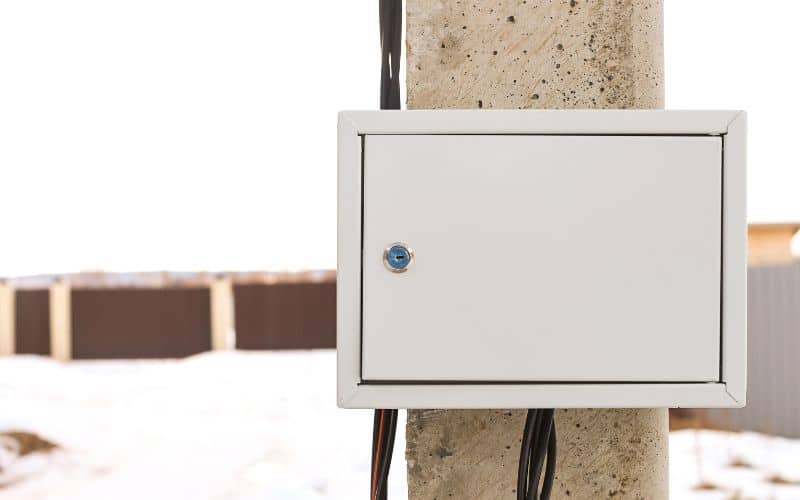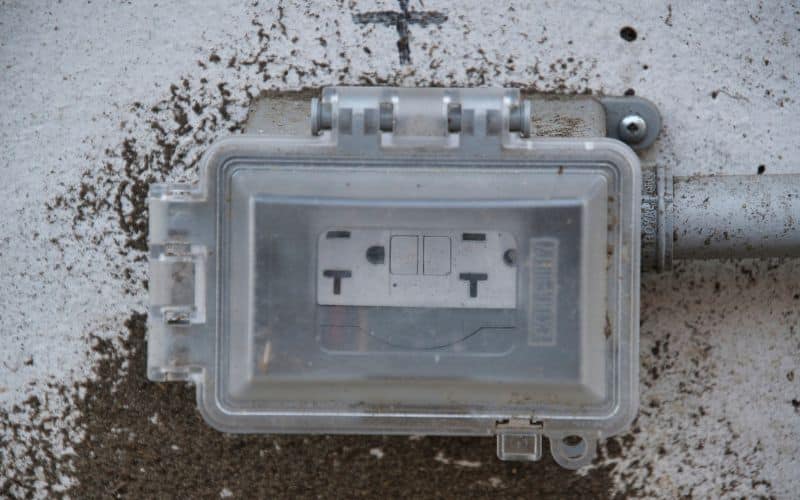
Outdoor electrical safety is something I take seriously, and I’m sure you do too. With the unpredictability of the weather and the reliance on gadgets and tools that need power, knowing how to protect your plugs outside is crucial. It’s not just about ensuring your garden party goes off without a hitch; it’s about keeping your home safe from electrical hazards.
In this article, I’ll walk you through the steps to safeguard your outdoor plugs and extension cords. You’ll learn the importance of using the right equipment and how to handle it properly to prevent accidents. Whether it’s a sunny day or a torrential downpour, I’ve got the tips you need to keep your electrical connections secure and dry. So, let’s get started and make sure your outdoor power needs are covered safely.
Why Is It Important to Protect Your Plug Outside?
Weather Conditions Can Damage Your Plug
Outdoor electrical plugs face a barrage of weather-related challenges. From blistering heat to freezing cold, outdoor outlets are exposed to the elements. Rain, sleet, snow, and even intense sunlight can degrade the materials used in electrical plugs and sockets. Water is particularly harmful because it can lead to rust and corrosion, which compromise the structural integrity of the plug. Even high humidity levels can allow moisture to accumulate, fostering an environment that’s conducive to the decay of electrical components.
I’ve noticed that during heavy rains or in areas that experience frequent storms, the chances of moisture seeping into unprotected plugs are significantly higher. Since most outdoor electrical accidents occur because of moisture intrusion, the necessity to keep plugs dry cannot be overstressed. This is why it’s essential to ensure that your outdoor plugs are adequately protected against all types of weather conditions.
Exposed Plugs Are a Safety Hazard
Beyond damage to the plugs themselves, unprotected outdoor plugs present real safety concerns. An exposed plug can cause electric shock if touched, and when electrical connections become wet, they can lead to short-circuiting. This not only endangers the individuals using these outlets but also any bystanders, pets or wildlife in the vicinity. The risks escalate in the presence of Standing Water; for instance, after a heavy downpour, when the likelihood of electrocution increases.
Moreover, faulty and exposed plugs raise the risk of fire hazards. Electrical fires are often the result of damaged wiring and components, and they can quickly spread, especially in outdoor environments where dry leaves and brush can act as tinder. It’s obvious that a conscientious effort to protect our outdoor plugs could significantly reduce these risks and ensure the safety of everyone.
Protecting Your Plug Extends Its Lifespan
Finally, protecting outdoor plugs can also lead to financial benefits by extending the lifespan of your electrical devices. When plugs and their connections remain dry and shielded from the elements, they don’t undergo the stress and damage that typically lead to failures. Consistent Maintenance and care ensure that materials don’t wear down as rapidly, which means replacement and repair costs diminish over time.
In my experience, taking preemptive actions to protect outdoor plugs not only saves money but also cuts down on the frustrations associated with device malfunction. With fewer issues cropping up, I spend less time troubleshooting and repairing, and that alone is worth the small investment in protective measures for outdoor electrical equipment. Protecting your plugs properly means you’re maintaining a safe, efficient, and cost-effective environment for all your outdoor electrical needs.

Tips to Protect Your Plug Outside
When it comes to protecting my outdoor electrical plugs, I’ve learned that using the right equipment and following some key practices make all the difference.
Use Weatherproof Covers
I’ve found that weatherproof covers are essential in maintaining the integrity of my outdoor plugs. To avoid the common pitfall of exposing plugs to the elements when in use, I always opt for “in-use” weatherproof covers. These covers, which often feature a semi-dome shape with a gasketed flip-up cover, ensure a snug fit around the plug, keeping it dry even during operation. This little extra protection from an “in-use” cover can prevent rust, corrosion, as well as electrical hazards such as short circuiting or electrical fires. It’s an easy, yet crucial step in ensuring both safety and longevity for outdoor electrical connections.
Install An Outdoor Waterproof Box
Another proactive step I take to shield my outdoor electrical components is installing a waterproof electrical box. An outdoor outlet box must not only be waterproof but also equipped with a cover suitable for the specific location. A damp location requires a basic weatherproof cover, while an outlet that regularly battles the elements needs an “in-use” cover rated for wet locations. Moreover, all outdoor outlets should have GFCI protection for enhanced safety. I follow the National Electrical Code (NEC) guidelines closely: an outdoor waterproof box, when installed correctly, can shield the GFCI outlet from water and physical damage while maintaining ease of operation.
Consider Using Plug Protectors
On top of weatherproof covers and outdoor waterproof boxes, I sometimes employ plug protectors, especially for outlets that are not regularly in use. They’re like an additional safety net, preventing debris, dust, and even small critters from entering the plug slots. These protectors are simple yet effective, and when used in combination with weatherproof covers and a waterproof box, they provide a comprehensive protection strategy for outdoor plugs that I’ve come to rely on.
By integrating these protective measures, managing the hazards and ensuring the functionality and safety of my outdoor plugs is a straightforward task. It’s all about choosing the right protective equipment and staying diligent in routine maintenance.

Best Practices for Outdoor Plug Safety
Outdoor electrical safety is not just a matter of installation but also of ongoing vigilance. Ensuring that outdoor plugs remain secure against environmental factors like moisture and dirt means adopting practices built on awareness and precaution.
Regularly Inspect Your Plugs
One of the key measures I recommend is conducting regular inspections of outdoor plugs. Visual Inspection should be the first line of defense against potential hazards. Examine if the casings and insulation of the plugs and any connected cords are intact because any cracks or breaks can create opportunities for dangerous moisture ingress. Worn or damaged cords are a risk as they can lead to short circuits, so replace them immediately. Always feel along the length of cords before you use them to detect any hidden damage.
Keep Plugs Away from Wet Areas
Keeping plugs dry is crucial for safety, and positioning plays a big part in this. You should always strive to position electrical plugs where direct contact with water is unlikely, such as under eaves or within a covered patio. Where exposure to water cannot be avoided, as in gardens or near swimming pools, use ‘in-use’ covers to maintain a watertight seal over the plugs. Moreover, every outdoor plug and receptacle should be shielded by weatherproof covers at all times, whether they’re currently in use or not.
Use Extension Cords Rated for Outdoor Use
Extension cords can be a convenient solution for outdoor power needs, but they must be rated for outdoor use. Indoor extension cords are not designed to handle outdoor conditions and using them could lead to shock, electrocution, or fire. This also violates regulatory standards like the Ontario Electrical Safety Code. Outdoor-rated cords are built with tougher insulation and are designed to withstand temperature fluctuations, UV radiation and moisture. Make the right choice to prevent any regrettable incidents.
Looking beyond a mere functional approach, ensuring the safety of outdoor plugs is about creating a comprehensive strategy that integrates inspection, careful placement, and the use of appropriate accessories. It’s important to stay informed about best practices and remember that outdoor electrical safety is a continuous commitment.
Conclusion
Protecting my outdoor plugs is critical for maintaining a safe and functional outdoor space. By adopting the strategies I’ve shared, I’m confident I can avoid common electrical issues and extend the life of my outdoor electrical systems. I’ll make sure to keep my plugs dry, debris-free, and well-insulated against the elements. Regular inspections and the right protective accessories are the keys to ensuring my outdoor electrical plugs remain in top condition, ready to power my garden lights, tools, or festive decorations safely throughout the year. Remember, a little foresight and the correct measures can go a long way in safeguarding my home’s exterior power sources.
Colin Macmillan is a seasoned entrepreneur and the CEO of Riverwood Landscape, a leading landscaping company based in Canada. He has been at the helm of the company since leaving high school, demonstrating his strong leadership skills and business acumen.
Colin’s expertise lies in various aspects of landscaping, including lawn care, interlocking, sod installation, and commercial maintenance. His hands-on approach and dedication to the craft have been instrumental in building Riverwood Landscape into a reputable brand.
One of his most notable achievements is the creation of a successful landscape franchise that services multiple locations. This accomplishment underscores his strategic thinking and ability to scale operations effectively.
Colin has also had the privilege of working with Guelph Hospital for landscaping and maintenance, a testament to the trust and reliability that his company has earned over the years.
His professional mission is to offer the best services and experiences for customers, a goal that he tirelessly pursues. Colin’s commitment to excellence and customer satisfaction continues to drive the growth and success of Riverwood Landscape.








